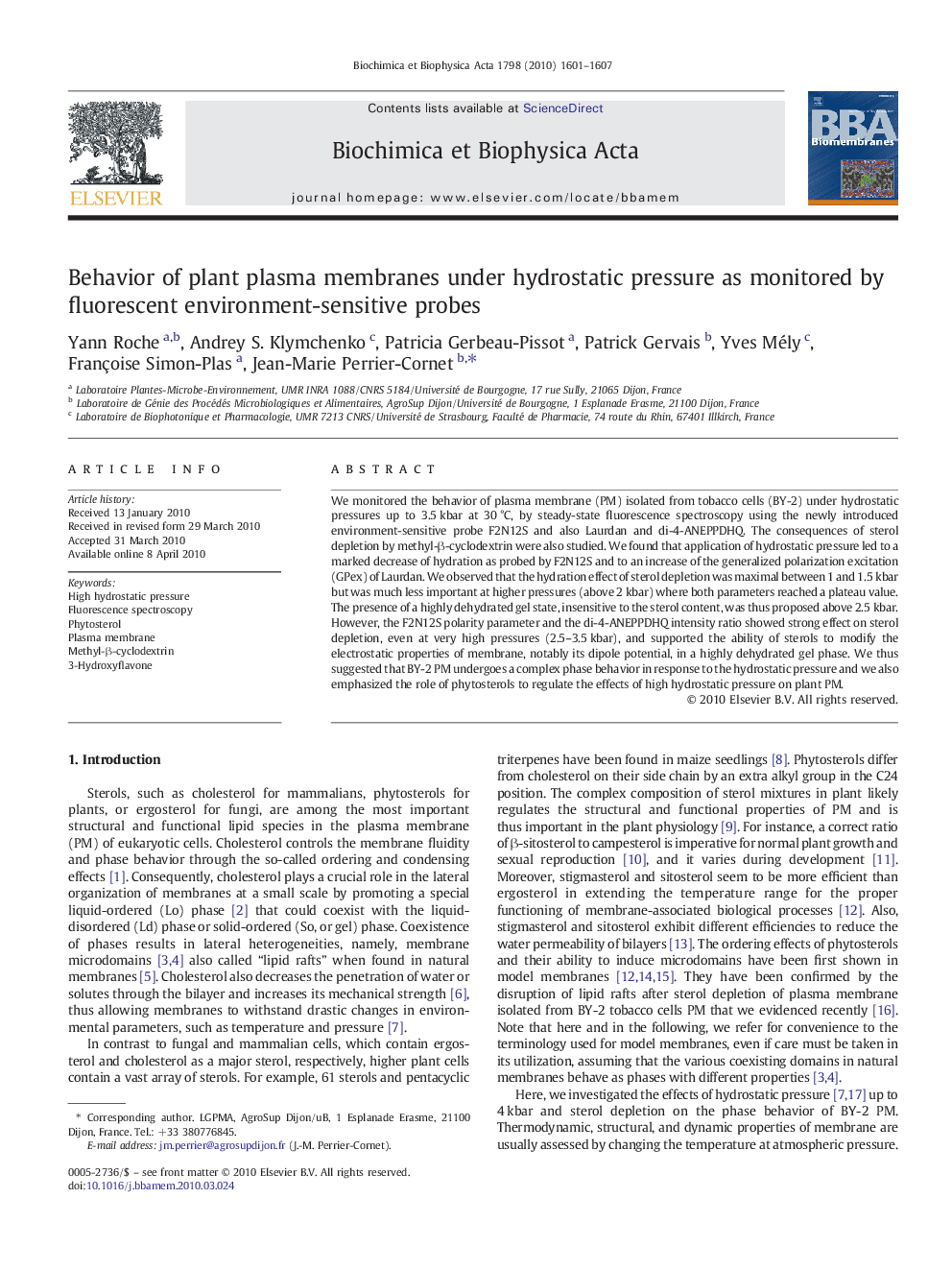| Article ID | Journal | Published Year | Pages | File Type |
|---|---|---|---|---|
| 1944704 | Biochimica et Biophysica Acta (BBA) - Biomembranes | 2010 | 7 Pages |
We monitored the behavior of plasma membrane (PM) isolated from tobacco cells (BY-2) under hydrostatic pressures up to 3.5 kbar at 30 °C, by steady-state fluorescence spectroscopy using the newly introduced environment-sensitive probe F2N12S and also Laurdan and di-4-ANEPPDHQ. The consequences of sterol depletion by methyl-β-cyclodextrin were also studied. We found that application of hydrostatic pressure led to a marked decrease of hydration as probed by F2N12S and to an increase of the generalized polarization excitation (GPex) of Laurdan. We observed that the hydration effect of sterol depletion was maximal between 1 and 1.5 kbar but was much less important at higher pressures (above 2 kbar) where both parameters reached a plateau value. The presence of a highly dehydrated gel state, insensitive to the sterol content, was thus proposed above 2.5 kbar. However, the F2N12S polarity parameter and the di-4-ANEPPDHQ intensity ratio showed strong effect on sterol depletion, even at very high pressures (2.5–3.5 kbar), and supported the ability of sterols to modify the electrostatic properties of membrane, notably its dipole potential, in a highly dehydrated gel phase. We thus suggested that BY-2 PM undergoes a complex phase behavior in response to the hydrostatic pressure and we also emphasized the role of phytosterols to regulate the effects of high hydrostatic pressure on plant PM.
